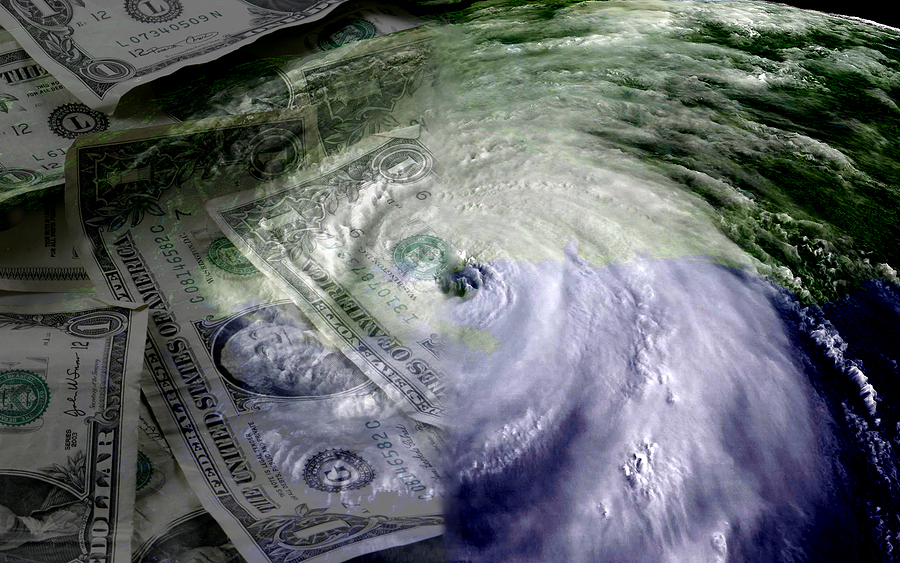Superstorm Sandy is threatening to drag the U.S. government’s debt-ridden flood insurance program back into the political crosshairs just months after Congress attempted to put the controversial program on a sound financial footing.
It is unclear if claims from Sandy, which delivered a wallop to the northeastern United States earlier this week, will exceed the $3.7 billion the National Flood Insurance Program can spend before Congress needs to authorize more funds.
The largest private provider of policies for the flood program said on Thursday it expects Sandy will be the second-worst insured flood loss in U.S. history, behind only Hurricane Katrina in 2005.
That disaster, with $17.7 billion in claims, plunged the program into debt that the government has acknowledged may never be fully repaid from premiums.
“It had become crystal clear, and it will probably become a little bit more clear, post-Sandy, that the premium structure was woefully inadequate,” said Tom Santos, vice-president for federal affairs at the American Insurance Association, a trade group.
Santos noted that changes included in legislation passed in July will soon begin to address some of the longstanding issues.
Critics of the program complain that it subsidizes people who live and build in dangerous and environmentally sensitive flood zones from the coasts to the Midwest.
So far budget-focused lawmakers have been careful to not openly attack the program. But once Sandy’s flood damage is tallied, there could be renewed calls for subsidy cuts if the Federal Emergency Management Agency has to ask for permission to borrow more money to run the program, which would add to its already hefty debt of close to $18 billion.
In July, Congress passed a five-year funding plan that will update risk maps, phase in higher premiums for more risk-prone areas, cut subsidies for flood insurance for vacation homes, and make other changes designed to encourage more private sector competition and gradually reduce the program’s debt.
The package attracted broad political support in the Republican-controlled House, passing 406-22. Knowing the changes are coming may give lawmakers more comfort in agreeing to raise its borrowing cap, if needed, due to the extraordinary circumstances of the October storm, said a House Republican aide who spoke on background.
Lawmakers will watch closely to ensure the reforms take hold, but would be reluctant to start another pitched battle over the future of the program so soon after coming to a five-year deal.
“This was a very solid bill, and we’re going to want to see it have a chance to take effect before we reopen that debate, I think,” the Republican aide said.
SMALLER CLAIMS THAN KATRINA
Standard homeowners’ insurance does not cover flooding. The government set up the NFIP in 1968 to provide affordable insurance, impose flood management policies on vulnerable communities and reduce federal disaster aid costs.
The NFIP provides coverage through roughly 80 companies that sell policies and collect premiums on the government’s behalf for a fee. The premiums go to FEMA.
In recent years, with severe hurricanes in 2004 and 2005, premiums have not met claims costs, forcing FEMA to borrow money.
It is too early to tell whether Sandy’s flood damages will exceed the program’s resources. Wright Flood, the largest private provider of policies for the program, is getting about 3,000 claims a day so far, said Patty Templeton-Jones, the company’s chief operating officer. That will only rise as people start actually getting back to their houses.
In total, she said FEMA is expecting claims on at least 80,000 policies after Sandy, about a quarter of which Wright will handle.
But the claims may be smaller than usual. Just like Hurricane Irene last year, many of the affected homes have basements, which receive only limited insurance coverage and which end up taking on most of the water that would otherwise flood the rest of the house.
The average payout on Irene claims was just under $30,000. Multiplied by 80,000 policies, that would imply a payout for Sandy of around $2.4 billion – well within the program’s $3.7 billion cushion.
“It is a contract between the insured and the federal government and I just don’t see that ever not being honored,” Templeton-Jones said in an interview.
ARMED WITH COVERAGE
Steve Ellis, vice president of Taxpayers for Common Sense and a critic of the flood insurance program, also expects Congress will ensure the program has the support it needs to honor claims.
But if Congress has to pass legislation to increase the program’s borrowing authority, Ellis said there is a chance that lawmakers could insist on reviving some provisions that were dropped at the last minute so that the bill could pass through the Senate in July. It was attached to a package that also renewed transportation and student loan funding.
One provision that could be revived would require more people living near levees to buy flood insurance, Ellis said, arguing it makes more sense for those homeowners to protect themselves with coverage rather than try to make do with less comprehensive flood relief and government loans when disaster strikes.
Topics USA Legislation Claims Flood
Was this article valuable?
Here are more articles you may enjoy.



 The Top 15 U.S. Metros with High Exposure to Wildfire Risk
The Top 15 U.S. Metros with High Exposure to Wildfire Risk  Liberty Mutual Posts $1.5B Net Income for Q1, Reversing Loss
Liberty Mutual Posts $1.5B Net Income for Q1, Reversing Loss  Everton FC Buyer Accused of Fraud, Double-Pledging Assets in Lawsuit
Everton FC Buyer Accused of Fraud, Double-Pledging Assets in Lawsuit  Biden Vetoes Bid to Repeal US Labor Board Rule on Contract, Franchise Workers
Biden Vetoes Bid to Repeal US Labor Board Rule on Contract, Franchise Workers 

